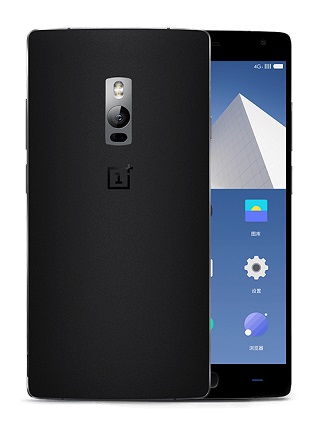Oppo's ColorOS 11 seems to be getting thumbs up from popular tech reviewers. What are your thoughts about the OS?
— PiunikaWeb - Everything Google Pixel (@PiunikaWeb) November 16, 2020
Read our opinion: https://t.co/N9dFEEVWCH
New updates are being added to the bottom of the story…
Original story (from March 28, 2021) follows:
OnePlus was born in 2014 with the aim of disrupting the smartphone industry by bringing high-end devices at a very affordable prices.
The first and second OnePlus handsets — OnePlus One and OnePlus 2 — were inspired by Oppo’s Find 7A.
This was the first core evidence that OnePlus was a subsidiary of Oppo. After all, CEO Pete Lau was a VP at Oppo having worked in the company for over 10 years.

Still, OnePlus has over the time continuously denied any dependence on Oppo, but we all know the duo is inextricably connected.
In fact, the company has finally come to terms with this, at least going by the latest developments from China. Going forward, OnePlus phones back at home will run Oppo’s ColorOS.
This begins with the newly launched OnePlus 9 series, which brings forth one of the most expensive OnePlus smartphones yet — the OnePlus 9 Pro priced at $969, going as high as $1069.
At this price, it means OnePlus has essentially lost one of its major selling points. The other one being timely software updates.

Unfortunately, the Chinese company has laxed massively when it comes to timely software updates. As noted, the promise of timely updates is a big deal for OnePlus fans besides the bang for buck.
But over the recent past, especially with the rollout of Android 11, things have really slowed down. Heck, even Samsung is now ahead of OnePlus when it comes to timely software updates.
And at a time when frustrations are rife in the OnePlus camp over the slow updates, one would expect the company to make moves that should see it go back to its lost glory.
Instead, OnePlus is moving its Chinese phones, beginning with OnePlus 9 series, to Oppo’s ColorOS skin. There’s also talk of porting the skin to older OnePlus models.

The ColorOS skin takes the place of HydrogenOS, which has been the Chinese opposite of OxygenOS. In fact, development of the latter was highly dependent on its Chinese counterpart.
With this switch to ColorOS, though, this dependency seems broken, something that is likely set to affect OxygenOS update timelines for future OnePlus devices.
But how? You ask. Well, for starters, OnePlus devs now have more work on their hands.
In 2016, OnePlus said it was merging its OxygenOS and HydrogenOS teams into one with the aim of speeding up software development.
The main benefit of combining our team resources is to speed up software updates. We know we have some room to continue improving there, and this is an important step in the right direction.
For the most part, this worked just fine, where the same devs working on HydrogenOS were only required to make a few tweaks to the ROM and push it as OxygenOS across the globe.
But now that there are likely two teams working on a custom ColorOS version for OnePlus and a totally different OxygenOS build for the same, it could take longer to deliver updates outside China.

After all, devs will likely have to build OxygenOS from scratch rather than rely on the Chinese version. Maybe this switch has been ongoing internally for a while, hence the delayed OxygenOS 11 rollout.
Also, with no more China ROM to base development on, OxygenOS update timelines may suffer unless OnePlus dedicates more resources to OxygenOS.
Alternatively, OnePlus may simply replace HydrogenOS with a customized ColorOS version and use the latter as the base for OxygenOS, just like HydrogenOS has been the base for OxygenOS all these years.
Essentially, folks in China get a slightly tweaked version of ColorOS, which is further tweaked to OxygenOS for the global market.
Of course, this should ease the burden of developing OxygenOS from scratch and thus keep up with the timely updates of Android software for OnePlus devices.
And looking at the kind of reception ColorOS 11 had in the west, maybe the OxygenOS family won’t mind having a slimmed-down version of this skin on their phones.
Another possible scenario following OnePlus’ switch to ColorOS is faster OxygenOS updates, at least if Oppo’s ColorOS 11 update rollout is anything to go by.
Given how fast Oppo has become with software updates, ColorOS builds may be available early enough to OnePlus devs in China, meaning early updates for devices back at home.
This should propel the OxygenOS team into swift action in order to match their Chinese counterparts or not be left too far behind. As a result, we could equally see faster timelines for OxygenOS update.
With this change only taking effect, it may take some time before we see the impacts of the switch from HydrogenOS to ColorOS. Our hope is that it ends up becoming a positive switch.
We’d also like to know your thoughts on this matter. Do you think OnePlus’ switch to ColorOS in China will affect OxygenOS update timelines? Let us know in your comments below.
We also have a Twitter poll that you can cast your vote now, with the results to be published a week from now.
Time for poll!
— PiunikaWeb - Everything Google Pixel (@PiunikaWeb) March 28, 2021
Do you think OnePlus switching to ColorOS in China will speed up or slow down the global rollout of OxygenOS updates?
Vote below and read our opinion here: https://t.co/iTnGIyOmWk#OnePlus #Oppo #ColroOS #OxygenOS #updates #poll #Android #smartphone
Update 1 (April 04)
And our readers have spoken. Among those who voted, 26.7% believe OnePlus switching to ColorOS in China will speed up the global rollout of OxygenOS updates, while 56.7% believe it’ll worsen the case. 16.7% maintain this move will have no impact.
Update 2 (March 01, 2022)
OnePlus Co-founder Pete Lau has recently announced that OxygenOS and ColorOS will remain two distinct operating systems while sharing the same codebase. This means that the company calls off its plan to introduce a unified OS.
Moreover, Pete said that having the same codebase will ensure timely updates and better build quality for OnePlus devices. More on that here.
PiunikaWeb started as purely an investigative tech journalism website with main focus on ‘breaking’ or ‘exclusive’ news. In no time, our stories got picked up by the likes of Forbes, Foxnews, Gizmodo, TechCrunch, Engadget, The Verge, Macrumors, and many others. Want to know more about us? Head here.

![[Updated] Will OnePlus' switch to ColorOS in China affect OxygenOS update timelines? [Updated] Will OnePlus' switch to ColorOS in China affect OxygenOS update timelines?](https://piunikaweb.com/wp-content/uploads/2021/03/ColorOS-for-OnePlus-1.jpg)

